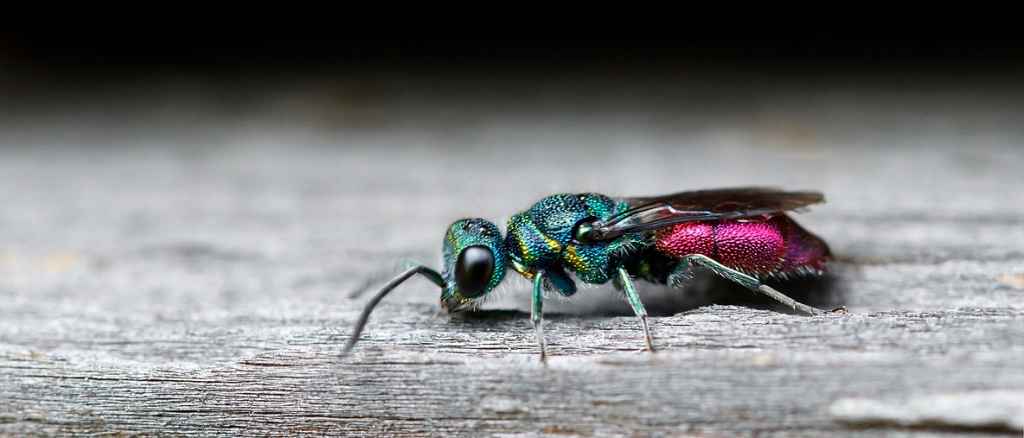Cuckoo wasps are becoming endangered faster than their host species

A recent doctoral dissertation indicates that populations of cuckoo wasps have markedly declined in Finland since the 1960s. A species previously unknown to science, named Chrysis borealis, was also discovered in the study.
Cuckoo wasps (Chrysididae) mainly live as parasites of solitary wasps and bees, and are thus situated at the top of the food chain. Such animals are particularly susceptible to environmental change, since they need large and stable populations of prey or host species in order to thrive. Furthermore, the populations of specialised parasites are distinctly smaller than those of their hosts.
In Finland, there are some 50 cuckoo wasp species. In 11 of them, a decreasing population trendwas observed between the periods 1840–1967 and 1968–2015. At the same time, none of the species had significantly increased. A particularly steep decline was seen in those small species already few in numbers that are dependent on sun-exposed deadwood. Alongside their hosts, these species have suffered from the intensification of forestry and the disappearance of old log buildings, as the hosts use holes in deadwood as their nesting sites.
The decline of species living in open sandy habitats was less severe, although many of them have also become increasingly rare as a result of overgrowing meadows and sands. It is likely that road verges and gravel pits have, to some extent, replaced their lost habitats.
Making use of natural science collections
“For my dissertation, it was possible to study population trends in cuckoo wasps with the help of museum collections. In the case of groups that are easier to identify, such as butterflies, collections are usually heavily biased to rare species. Cuckoo wasps, however, are often difficult to identify in the field, which is why specimens of different species end up in collections in almost the same proportion as they are found in nature,” says Juho Paukkunen, a Senior Museum Technician at the Finnish Museum of Natural History Luomus, part of the University of Helsinki.
As part of the study, Northern European cuckoo wasp species were surveyed, and a diagnostic key was compiled for the species found in the Nordic and Baltic countries. A total of 74 species were found, four of which were new to Northern Europe, and one of them, Chrysis borealis, was described as new to science.
